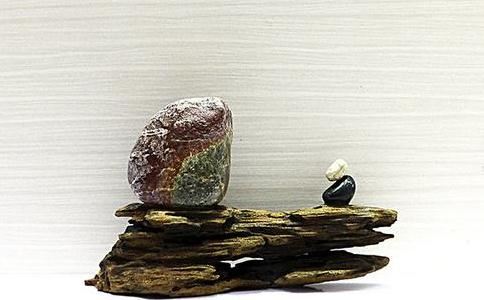
高斯(Gauss 1777~1855)生于Brunswick,位于现在德国中北部。他的祖父是农民,父亲是泥水匠,母亲是一个石匠的女儿,有一个很聪明的弟弟,高斯这位舅舅,对小高斯很照顾,偶而会给他一些指导,而父亲可以说是一名「大老粗」,认为只有力气能挣钱,学问这种劳什子对穷人是没有用的。
高斯很早就展现过人才华,三岁时就能指出父亲帐册上的错误。七岁时进了小学,在破旧的教室里上课,老师对学生并不好,常认为自己在穷乡僻壤教书是怀才不遇。高斯十岁时,老师考了那道着名的「从一加到一百」,终于发现了高斯的才华,他知道自己的能力不足以教高斯,就从汉堡买了一本较深的数学书给高斯读。同时,高斯和大他差不多十岁的助教Bartels变得很熟,而Bartels的能力也比老师高得多,后来成为大学教授,他教了高斯更多更深的数学。
老师和助教去拜访高斯的父亲,要他让高斯接受更高的教育,但高斯的父亲认为儿子应该像他一样,作个泥水匠,而且也没有钱让高斯继续读书,最后的结论是--去找有钱有势的人当高斯的赞助人,虽然他们不知道要到哪里找。经过这次的访问,高斯免除了每天晚上织布的工作,每天和Bartels讨论数学,但不久之后,Bartels也没有什么东西可以教高斯了。
1788年高斯不顾父亲的反对进了高等学校。数学老师看了高斯的作业后就要他不必再上数学课,而他的拉丁文不久也凌驾全班之上。
1791年高斯终于找到了资助人--布伦斯维克公爵费迪南(Braunschweig),答应尽一切可能帮助他,高斯的父亲再也没有反对的理由。隔年,高斯进入Braunschweig学院。这年,高斯十五岁。在那里,高斯开始对高等数学作研究。并且独立发现了二项式定理的一般形式、数论上的「二次互逆定理」(Law of Quadratic Reciprocity)、质数分布定理(prime numer theorem)、及算术几何平均(arithmetic-geometric mean)。
1795年高斯进入哥廷根(G?ttingen)大学,因为他在语言和数学上都极有天分,为了将来是要专攻古典语文或数学苦恼了一阵子。到了1796年,十七岁的高斯得到了一个数学史上极重要的结果。最为人所知,也使得他走上数学之路的,就是正十七边形尺规作图之理论与方法。希腊时代的数学家已经知道如何用尺规作出正 2m3n5p 边形,其中 m 是正整数,而 n 和 p 只能是0或1。但是对于正七、九、十一边形的尺规作图法,两千年来都没有人知道。而高斯证明了:
一个正 n 边形可以尺规作图若且唯若 n 是以下两种形式之一:
1、n = 2k,k = 2, 3,
2、n = 2k (几个不同「费马质数」的乘积),k = 0,1,2,
费马质数是形如 Fk = 22k 的质数。像 F0 = 3,F1 = 5,F2 = 17,F3 = 257, F4 = 65537,都是质数。高斯用代数的方法解决二千多年来的几何难题,他也视此为生平得意之作,还交待要把正十七边形刻在他的墓碑上,但后来他的墓碑上并没有刻上十七边形,而是十七角星,因为负责刻碑的雕刻家认为,正十七边形和圆太像了,大家一定分辨不出来。
1799年高斯提出了他的博士论文,这论文证明了代数一个重要的定理:
任一多项式都有(复数)根。这结果称为「代数学基本定理」(Fundamental Theorem of Algebra)。
事实上在高斯之前有许多数学家认为已给出了这个结果的证明,可是没有一个证明是严密的。高斯把前人证明的缺失一一指出来,然后提出自己的见解,他一生中一共给出了四个不同的证明。
在1801年,高斯二十四岁时出版了《算学研究》(Disquesitiones Arithmeticae),这本书以拉丁文写成,原来有八章,由于钱不够,只好印七章。
这本书除了第七章介绍代数基本定理外,其余都是数论,可以说是数论第一本有系统的着作,高斯第一次介绍「同余」(Congruent)的概念。「二次互逆定理」也在其中。
二十四岁开始,高斯放弃在纯数学的研究,作了几年天文学的研究。
当时的天文界正在为火星和木星间庞大的间隙烦恼不已,认为火星和木星间应该还有行星未被发现。在1801年,意大利的天文学家Piazzi,发现在火星和木星间有一颗新星。它被命名为「谷神星」(Cere)。现在我们知道它是火星和木星的小行星带中的一个,但当时天文学界争论不休,有人说这是行星,有人说这是彗星。必须继续观察才能判决,但是Piazzi只能观察到它9度的轨道,再来,它便隐身到太阳后面去了。因此无法知道它的轨道,也无法判定它是行星或彗星。
高斯这时对这个问是产生兴趣,他决定解决这个捉摸不到的星体轨迹的问题。高斯自己独创了只要三次观察,就可以来计算星球轨道的方法。他可以极准确地预测行星的位置。果然,谷神星准确无误的在高斯预测的地方出现。这个方法--虽然他当时没有公布--就是「最小平方法」 (Method of Least Square)。
1802年,他又准确预测了小行星二号--智神星(Pallas)的位置,这时他的声名远播,荣誉滚滚而来,俄国圣彼得堡科学院选他为会员,发现Pallas的天文学家Olbers请他当哥廷根天文台主任,他没有立刻答应,到了1807年才前往哥廷根就任。
1809年他写了《天体运动理论》二册,第一册包含了微分方程、圆椎截痕和椭圆轨道,第二册他展示了如何估计行星的轨道。高斯在天文学上的贡献大多在1817年以前,但他仍一直做着观察的工作到他七十岁为止。虽然做着天文台的工作,他仍抽空做其他研究。为了用积分解天体运动的微分力程,他考虑无穷级数,并研究级数的收敛问题,在1812年,他研究了超几何级数(Hypergeometric Series),并且把研究结果写成专题论文,呈给哥廷根皇家科学院。
1820到1830年间,高斯为了测绘汗诺华(Hanover)公国(高斯住的地方)的地图,开始做测地的工作,他写了关于测地学的书,由于测地上的需要,他发明了日观测仪(Heliotrope)。为了要对地球表面作研究,他开始对一些曲面的几何性质作研究。
1827年他发表了《曲面的一般研究》 (Disquisitiones generales circa superficies curva),涵盖一部分现在大学念的「微分几何」。
在1830到1840年间,高斯和一个比他小廿七岁的年轻物理学家-韦伯(Withelm Weber)一起从事磁的研究,他们的合作是很理想的:韦伯作实验,高斯研究理论,韦伯引起高斯对物理问题的兴趣,而高斯用数学工具处理物理问题,影响韦伯的思考工作方法。
1833年高斯从他的天文台拉了一条长八千尺的电线,跨过许多人家的屋顶,一直到韦伯的实验室,以伏特电池为电源,构造了世界第一个电报机。
1835年高斯在天文台里设立磁观测站,并且组织「磁协会」发表研究结果,引起世界广大地区对地磁作研究和测量。
高斯已经得到了地磁的准确理,他为了要获得实验数据的证明,他的书《地磁的一般理论》拖到1839年才发表。
1840年他和韦伯画出了世界第一张地球磁场图,而且定出了地球磁南极和磁北极的位置。 1841年美国科学家证实了高斯的理论,找到了磁南极和磁北极的确实位置。
高斯对自己的工作态度是精益求精,非常严格地要求自己的研究成果。他自己曾说:「宁可发表少,但发表的东西是成熟的成果。」许多当代的数学家要求他,不要太认真,把结果写出来发表,这对数学的发展是很有帮助的。
其中一个有名的例子是关于非欧几何的发展。非欧几何的的开山祖师有三人,高斯、 Lobatchevsky(罗巴切乌斯基,1793~1856), Bolyai(波埃伊,1802~1860)。其中Bolyai的父亲是高斯大学的同学,他曾想试着证明平行公理,虽然父亲反对他继续从事这种看起来毫无希望的研究,小Bolyai还是沉溺于平行公理。最后发展出了非欧几何,并且在1832~1833年发表了研究结果,老Bolyai把儿子的成果寄给老同学高斯,想不到高斯却回信道:
to praise it would mean to praise myself.我无法夸赞他,因为夸赞他就等于夸奖我自己。
早在几十年前,高斯就已经得到了相同的结果,只是怕不能为世人所接受而没有公布而已。
美国的着名数学家贝尔(E.T.Bell),在他着的《数学工作者》(Men of Mathematics) 一书里曾经这样批评高斯:
在高斯死后,人们才知道他早就预见一些十九世的数学,而且在1800年之前已经期待它们的出现。如果他能把他所知道的一些东西泄漏,很可能现在数学早比目前还要先进半个世纪或更多的时间。阿贝尔(Abel)和雅可比(Jacobi)可以从高斯所停留的地方开始工作,而不是把他们最好的努力花在发现高斯早在他们出生时就知道的东西。而那些非欧几何学的创造者,可以把他们的天才用到其他力面去。
在1855年二月23日清晨,高斯在他的睡梦中安详的去世了。


